History
A church was present at the site, which included the old Roman forum by 809, but it was rebuilt after a fire in 1174. In about 1583, Duke Ranuccio I Farnese had invited the Jesuits into the duchy, and ceded them the church. They razed the ancient structure and replaced it with the present church with construction spanning from 1585 and 1587. The belltower dates to the 17th century. In 1607, the Jesuits founded a seminary at this site. However, in 1768 the order was expelled from the duchy. [1] While the Jesuits returned some decades after the Napoleonic wars, they remained briefly until 1848 at the church of San Pietro. Since 1893, San Pietro was made a parish church. In the early decades of the 1900 the church underwent further restoration work, including of the present façade.
The adjacent Palazzo del Collegio dei Gesuiti was completed in 1593, [2] and now houses the Biblioteca Comunale Passerini Landi . [3] In 1840s, the library was said to house thousands of volumes of sacred and profane books, as well as private letters and manuscripts. [4]

The Church of St. Ignatius of Loyola at Campus Martius is a Latin Catholic titular church, of deaconry rank, dedicated to Ignatius of Loyola, the founder of the Society of Jesus, located in Rome, Italy. Built in Baroque style between 1626 and 1650, the church functioned originally as the chapel of the adjacent Roman College, which moved in 1584 to a new larger building and was renamed the Pontifical Gregorian University. It is one of the great 17th century preaching churches built by Counter-Reformation orders in the Centro Storico.
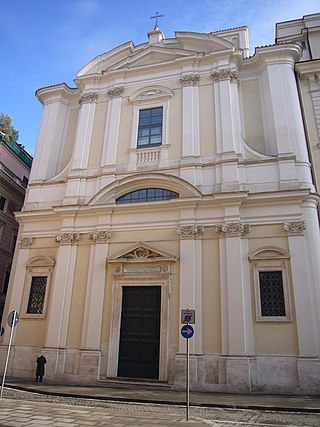
The Basilica di Sant'Apollinare alle Terme Neroniane-Alessandrine is a titular church in Rome, Italy, dedicated to St Apollinare, the first bishop of Ravenna.

San Bartolomeo is a Baroque church in Modena.

The church of Santa Maria delle Grazie in Brescia is located on at the west end of Via Elia Capriolo, where it intersects with the Via delle Grazie. Built in the 16th century and remodeled in the 17th century, it still retains much of its artwork by major regional artists, including one of its three canvases by Moretto. The other two are now held at the Pinacoteca Tosio Martinengo. The interior is richly decorated in Baroque fashion. Adjacent to the church is the Sanctuary of Santa Maria delle Grazie, a neo-gothic work.

San Giovanni in Canale is a Gothic-style Roman Catholic church located on Via Croce #26 in central Piacenza, formerly associated with a Dominican monastery.

San Francesco is a Roman Catholic church, located on Piazza Cavalli #68 in Piacenza, Italy. It was built in a style described as Lombard Gothic and is centrally located facing towards the Piazza del Cavalli, which is surrounded by the Palazzo Gotico and the Palazzo del Governatore.

San Donnino or San Donnino Martire is a Romanesque style Catholic church located at the intersection of Largo Cesare Battisti and Vicolo San Donnino in the historic center of Piacenza, Region of Emilia Romagna, Italy. Little is known of San Donnino, to whom the church is dedicated, as are other churches elsewhere, including Pisa. A St Domninus appears in early Church sources and some identify him with St Domninus of Fidenza, to whom Fidenza Cathedral is also dedicated. For some the Piacenza Domninus was a deacon of Piacenza in the early Christian period.

The Gazzola Institute is a school of the arts and art museum, located on via Gazzola n°9 in the town of Piacenza, region of Emilia Romagna, Italy.

The Church of Saint Roch is a late-Baroque style, Roman Catholic church dedicated to Saint Roch located in Parma, Italy.
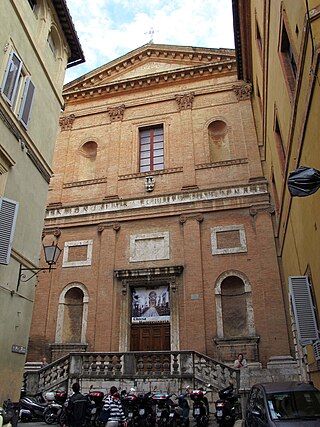
San Vigilio is a Renaissance and Baroque style, Roman Catholic church located on Via San Vigilio, Siena, region of Tuscany, Italy. The exterior has a sober classical facade, while the interior has rich Baroque decorations. The church is dedicated to the Bishop and martyr St Vigilius; it now serves as the chapel for the University of Siena. It stands across the street from the Castellare Ugurgieri, and down the street from the Palazzo Bandini Piccolomini found on the junction with Via Sallustio Bandini.
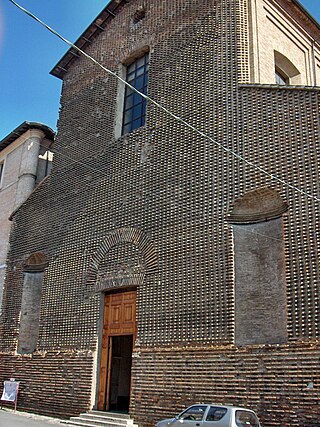
San Francesco Saverio also known as the Church of the Suffragio is a Baroque-style Roman Catholic church located in Piazza Ferrari #12 in Rimini, Italy. The church rises adjacent to the former convent of the Jesuits.
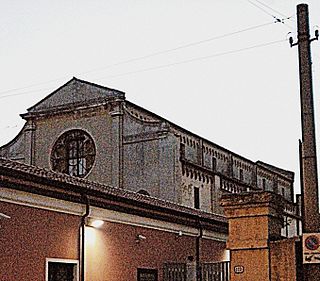
San Giovanni di Verdara or Saint John of Verdara is a former Roman Catholic monastery and church located on Via San Giovanni di Verdara # 123, in the city of Padua, region of Veneto, Italy. It was founded in 1221, but now serves as a military hospital, and is not accessible to the public.

The Chiesa del Gesù is a baroque-style, Roman Catholic church located on Strada Gesù #11 in Castellammare di Stabia, in the metropolitan city of Naples, region of Campania, Italy.
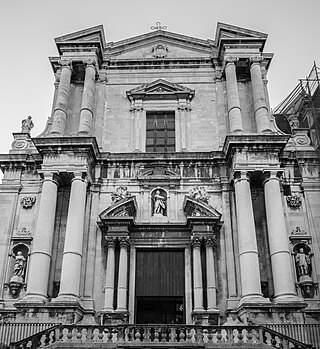
San Francesco Borgia is a Roman Catholic church located on Via Crociferi #7, adjacent to the former Collegio Gesuita, and parallel to San Benedetto, and about a block south on Crociferi of the church and convent of San Giuliano, in the city of Catania, region of Sicily, southern Italy. The church is mainly used for exhibits, but still holds much of the original Jesuit artwork.

Santa Brigida is a Neo-Gothic style, Roman Catholic parish church, located at Via del Castello #2, corner with Piazza del Borgo, in Piacenza, Region of Emilia Romagna, Italy.
Santi Nazzaro e Celso, or Nazaro e Celso, is a deconsecrated Roman Catholic church located at the corner of Cantone San Nazzaro and via Taverna Giuseppe in Piacenza, region of Emilia Romagna, Italy. Since the 1980s, the space is occupied by the Galleria Rosso Tiziano, which sponsors exhibitions and cultural events.

San Vincenzo is a Baroque style, Roman Catholic church, now deconsecrated, located at Via Scalabrini #6 in the South-East quadrant of Piacenza, Region of Emilia Romagna, Italy. The church was restored starting in 2009 for use as an auditorium and to host concerts.
Santa Raimondo is a Baroque style, Roman Catholic church, attached to a functioning Benedictine order cloistered monastery occupied by San Raimondo nuns. It is located at Corso Vittorio Emanuele #154 in the southern edge of historic Piacenza, Region of Emilia Romagna, Italy.
The Oratory of San Cristoforo is a deconsecrated former Roman Catholic church or chapel located at the chamfered corner of Vie Gregorio X and Angelo Genocchi, in the north-central sector of the historic center of Piacenza, Italy. It rises a block North West of the former Chiesa Sacro Cuore (Gesu) erected by the Jesuits and now housing the Teatro Gioia. The oratory presently houses an exposition space and museum named the Piccolo Museo della Poesia.

Palazzo Mandelli is a Baroque architecture-style palace located at the corner of Vie Bernardino Mandelli and San Marco in central Piacenza, region of Emilia-Romagna in Italy. The main portal rises in front of the church of San Dalmazio. The palace is presently home to the Banca d'Italia in Piacenza.


















